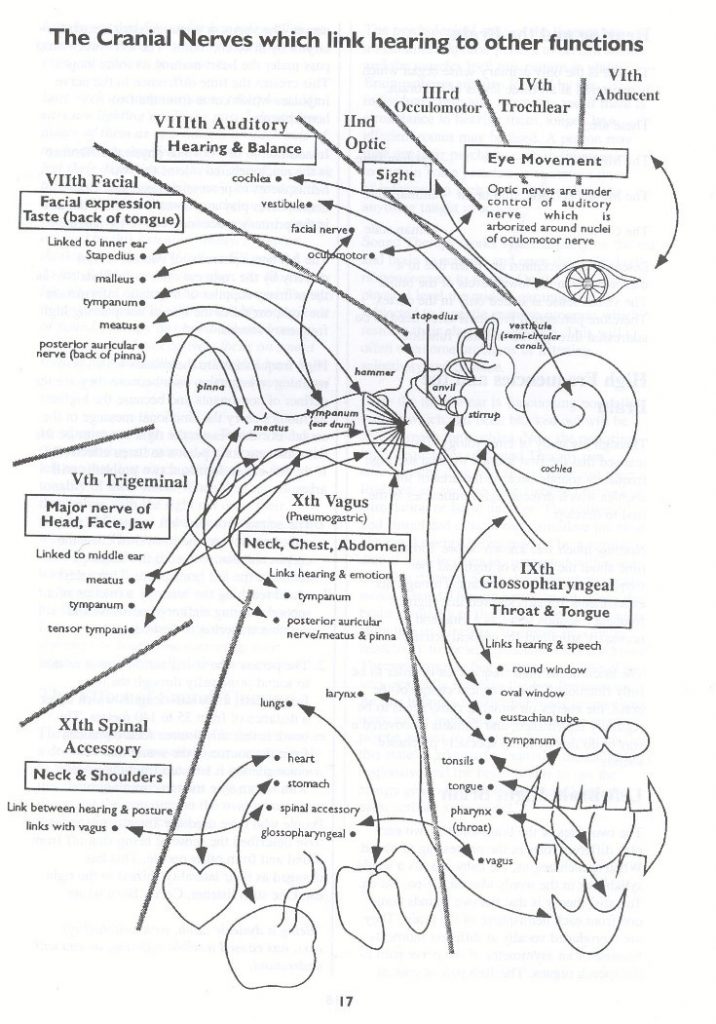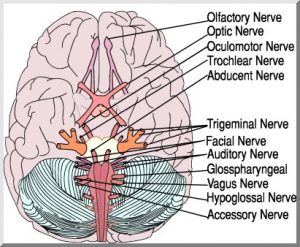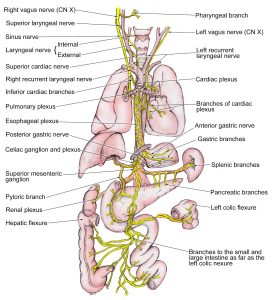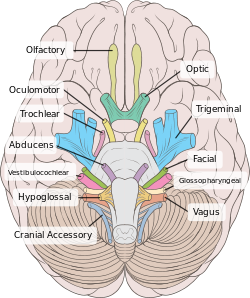4.1.13 What later discoveries have added to this knowledge?

Some later discoveries that have added knowledge are the neurophysiological model of tinnitus and the science of brain plasticity.
The science of brain plasticity over the last twenty years has proven that new brain pathways are created as a result of stimulation.
Therefore, we now know that listening to Sound Therapy physically builds and enhances our neural network.
Sound impacts not just our hearing but our entire nervous system, via the cranial nerves. (Weeks, 1989) In fact ten out of our twelve cranial nerves are linked in some way to the ear.


The auditory (8th cranial nerve) controls balance and hearing. A branch of this nerve arborises around (surrounds) the 3rd or oculomotor nerve. This means that the four cranial nerves concerned with vision are to some extent controlled by the auditory nerve.
The trigeminal (5th cranial nerve) is the major nerve of the head, face and jaw. This nerve controls the tension on the ear drum via the tensor tympani muscle. It therefore plays a significant role in the voluntary act of listening.
The facial (7th cranial nerve) controls facial expression and also the door to the inner ear chamber via the stapedius muscle. Thus it influences balance as well as the inner receptivity to sound.
The glossopharyngeal (9th cranial nerve) links hearing and speech. It contacts several parts of the ear concerned with pressure and links them to the tongue and throat.
The vagus (10th cranial nerve) accounts for the powerful relationship between hearing and emotion. After sending a twig across the ear drum the vagus wanders through the larynx, chest, heart, stomach and intestine, enabling our hearing to have an effect on all these organs.


The spinal accessory (11th cranial nerve), affecting posture in the neck and shoulders is also linked to the ear via its connection with the vagus.
Thus we see that the ear is not just a minor part of the nervous system, but is intricately and centrally linked with nearly all of our sensory processing mechanisms, placing it in a primary position as coordinator of our interface with the world.
The Twelve Cranial Nerves — Table
| No. | Name | Contact with ear | Primary function/
organs of contact |
Branches |
| 1 | Olfactory | Olfactory bulb – smell | ||
| 2 | Optic | Interacts with 8th | Eyeball – sight | 3rd |
| 3 | Occulomotor | Under control of 8th | Link between hearing and sight
Movement of the eye |
|
| 4 | Trochlear | Under control of 8th | Turns eye up and down | 3rd – lateral sinus upper jaw |
| 5 | Trigeminal | Ear Drum
Outer ear canal Tensor tympani |
Link between face, jaw and middle ear
The great sensory nerve of the head and face Motor nerve muscles of mastication |
Upper eyelid, facial nerve, forehead, nose, iris, cornea, teeth, lower eyelid, upper lip and lower lip, mucous membrane of mouth, palate, gums, uvula, tonsils, Eustachian tube, muscles of mastication, tempero-mandibular joint, tongue |
| 6 | Abducent | Under control of 8th | Eye movement | Optic, oculomotor |
| 7 | Facial | Stapedius
Meatus Chorda tympani Malleus Tympanum |
Link between face and inner ear
Facial expression Taste – back of tongue Upper part of neck muscles behind ear on back of pinna |
3rd, 10th, 9th, 5th
Shares filaments with auditory nerve in meatus |
| 8 | Auditory | Inner ear | Hearing and balance | Oculomotor
Vestibular – arborises around the nuclei of the oculomotor nerve Medulla Cochlear-facial nerve in meatus |
| 9 | Glossopharyngeal | Oval window
Round window Tympanum Eustachian tube |
Link between hearing and speech
Pharynx/throat Tonsils Tongue – taste Spinal accessory |
Vagus |
| 10 | Vagus/ Pneumogastric | Tympanum
Posterior auricular nerve Meatus, pinna |
Link between hearing and emotion
Neck thorax/chest, abdomen |
Motor sensory – voice, respiration
Motor – heart, stomach glossopharyngeal, facial, spinal accessory |
| 11 | Spinal Accessory | Interacts with vagus | Link between hearing and posture
Spinal, neck and trapezius |
Vagus – pharynx, larynx
2nd, 3rd, 4th cervical nerve |
| 12 | Hypoglossal | Motor nerve of tongue
Vagus |
1st and 2nd cervical nerves, lingual |

